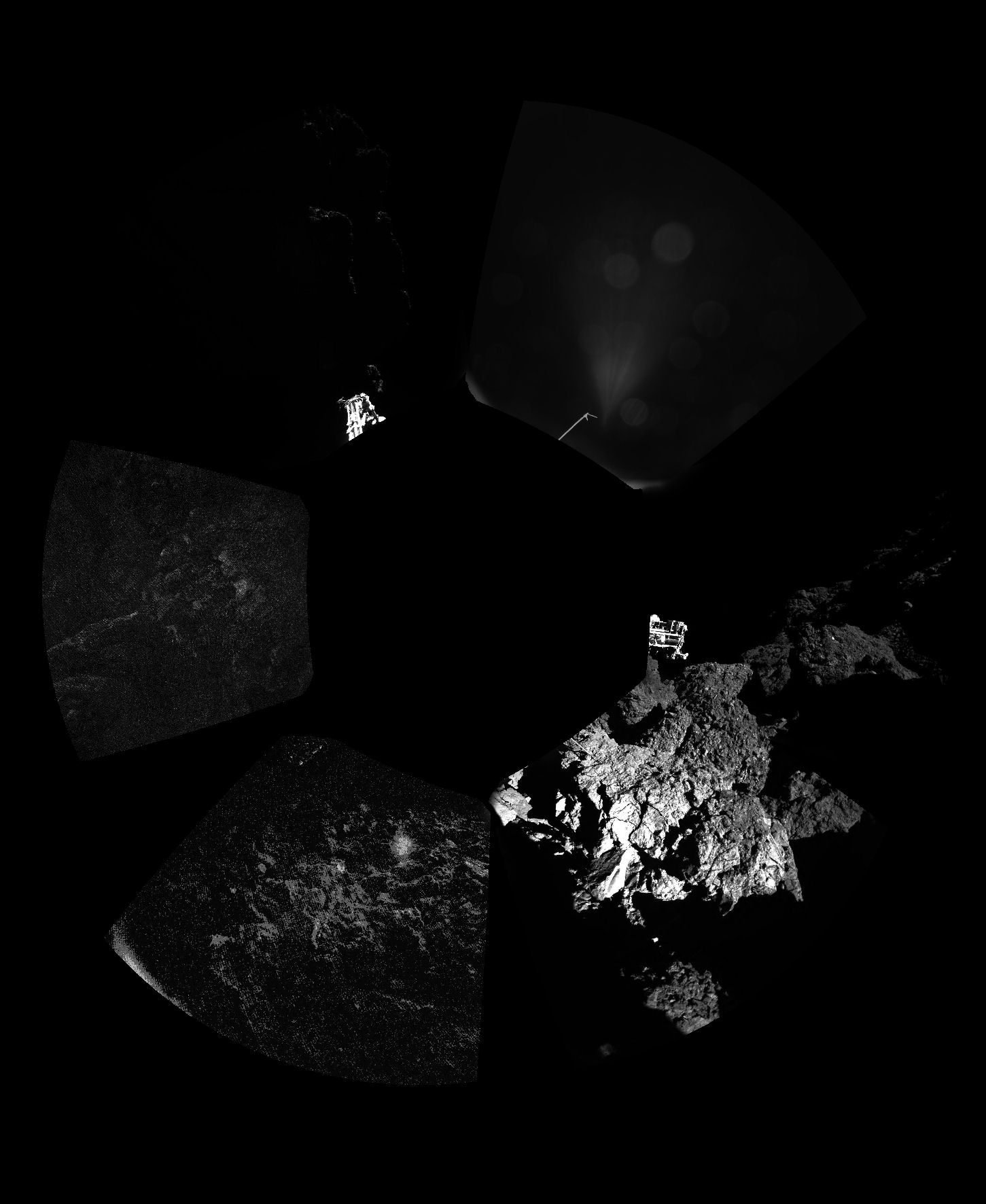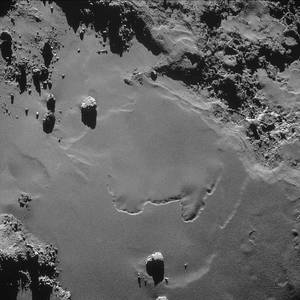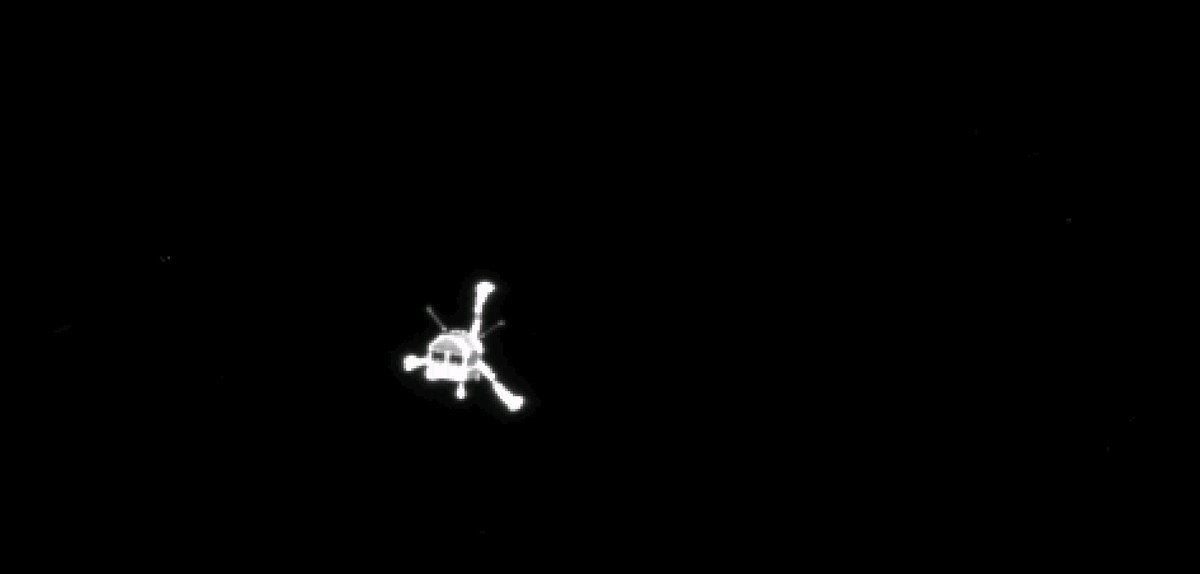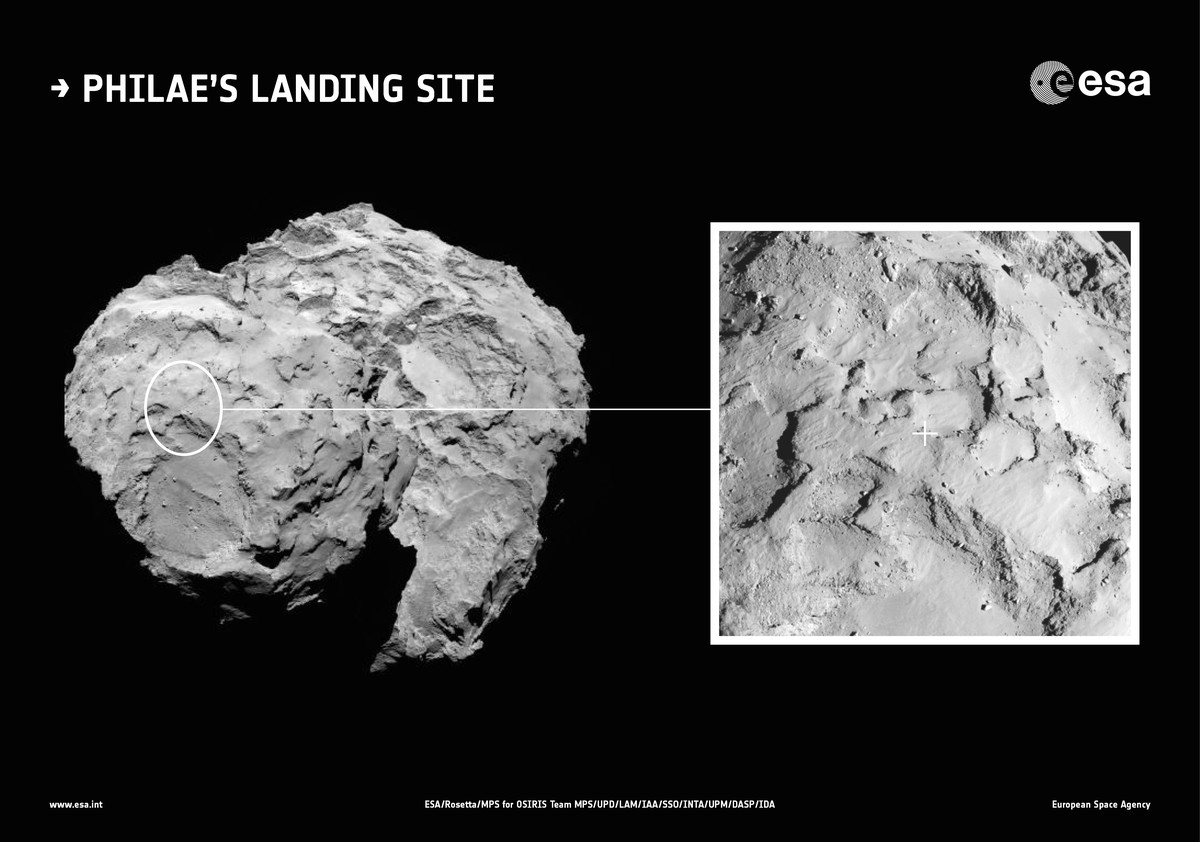The Rosetta mission advances above the difficulties
2014/11/14 Galarraga Aiestaran, Ana - Elhuyar Zientzia Iturria: Elhuyar aldizkaria

The first boat issued before stopping on the surface of the comet lasted two hours and the vehicle rose to a height of one kilometer. The second boat was smaller, but as a result of both, Philae moved away from the most appropriate place to land, Agilchy. Thanks to the CONSERT tool, they have calculated that it can be close to a great depression known as point B and expect high resolution images from Rosetta to help them find the vehicle.
One of its problems in the new location is that it has remained in the shade. This makes solar panels not get enough light. The possibility of directing the panels towards the sun or turning Philae is now being studied. Meanwhile, Philae's CIVA camera has already taken pictures of the comet's cover. According to them, it is covered with dust particles and rocks between a millimeter and a meter, and the vehicle is close to a wall and seems to have one of its legs in the air.
Before exhausting Philae's battery, ESA researchers have decided to make the most of it. Thus, scientific instruments have been launched, among which are those of physical characterization and temperature (MUPUS) and those of chemical analysis (APXS). The drill is also working and they are already collecting the data obtained by all of them, so they consider that they will have a large part of the expected scientific results.
These results will allow to know the comet composition, both superficial and underground. In addition, they will collect important vestiges on the creation of the solar system.
Therefore, since ESA has manifested a success in the operation. "We have achieved what we have not done so far," said the engineer Ander Martínez de Albeniz, who is participating in the mission. Responsible for the commands of Rosetta, he assures that during the operation of Philae the spacecraft has had no problem. From now on, and until December 2015, your mission will be to follow the comet. By then, the comet will be on the way back, after having been in August closer to the Sun.
More photos of the comet in the album of Filcker de Rosetta.

Gai honi buruzko eduki gehiago
Elhuyarrek garatutako teknologia






